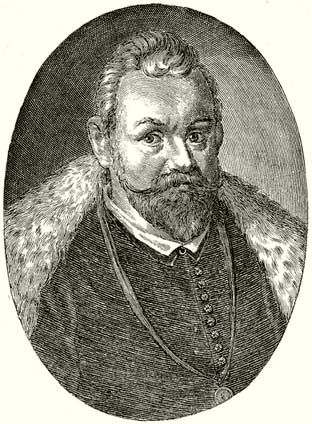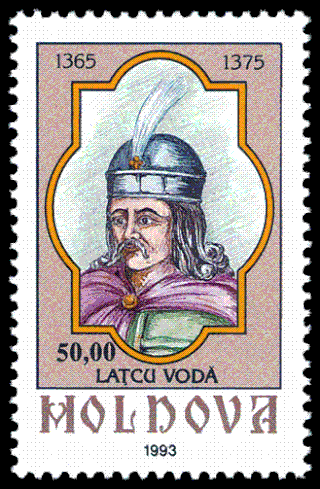Related Research Articles

Christopher Báthory was voivode of Transylvania from 1576 to 1581. He was a younger son of Stephen Báthory of Somlyó. Christopher's career began during the reign of Queen Isabella Jagiellon, who administered the eastern territories of the Kingdom of Hungary on behalf of her son, John Sigismund Zápolya, from 1556 to 1559. He was one of the commanders of John Sigismund's army in the early 1560s.

Sigismund Báthory was Prince of Transylvania several times between 1586 and 1602, and Duke of Racibórz and Opole in Silesia in 1598. His father, Christopher Báthory, ruled Transylvania as voivode of the absent prince, Stephen Báthory. Sigismund was still a child when the Diet of Transylvania elected him voivode at his dying father's request in 1581. Initially, regency councils administered Transylvania on his behalf, but Stephen Báthory made János Ghyczy the sole regent in 1585. Sigismund adopted the title of prince after Stephen Báthory died.

John Sigismund Zápolya or Szapolyai was King of Hungary as John II from 1540 to 1551 and from 1556 to 1570, and the first Prince of Transylvania, from 1570 to his death. He was the only son of John I, King of Hungary, and Isabella of Poland. John I ruled parts of the Kingdom of Hungary with the support of the Ottoman Sultan Suleiman; the remaining areas were ruled by Ferdinand I of Habsburg, who also ruled Austria and Bohemia. The two kings concluded a peace treaty in 1538 acknowledging Ferdinand's right to reunite Hungary after John I's death, though shortly after John Sigismund's birth, and on his deathbed, John I bequeathed his realm to his son. The late king's staunchest supporters elected the infant John Sigismund king, but he was not crowned with the Holy Crown of Hungary.

Gabriel Báthory was Prince of Transylvania from 1608 to 1613. Born to the Roman Catholic branch of the Báthory family, he was closely related to four rulers of the Principality of Transylvania. His father, Stephen Báthory, held estates in the principality, but never ruled it. Being a minor when his father died in 1601, Gabriel became the ward of the childless Stephen Báthory, from the Protestant branch of the family, who converted him to Calvinism. After inheriting most of his guardian's estates in 1605, Gabriel became one of the wealthiest landowners in Transylvania and Royal Hungary.
The Prince of Transylvania was the head of state of the Principality of Transylvania from the last decades of the 16th century until the middle of the 18th century. John Sigismund Zápolya was the first to adopt the title in 1570, but its use only became stable from 1576.

Lațcu was Voivode of Moldavia from c. 1367 to c. 1375. He converted to the Roman Catholic faith and attempted to strengthen his realm's autonomy by establishing a Roman Catholic diocese directly subordinated to the Holy See. However, he seems to have accepted the suzerainty of King Louis I of Hungary and Poland in his last years.
The Early Modern Times in Romania started after the death of Michael the Brave, who ruled in a personal union, Wallachia, Transylvania, and Moldavia – three principalities in the lands that now form Romania – for three months, in 1600. The three principalities were subjected to the Ottoman Empire, and paid a yearly tribute to the Ottoman Sultans, but they preserved their internal autonomy. In contrast, Dobruja and the Banat were fully incorporated into the Ottoman Empire.
The history of Christianity in Romania began within the Roman province of Lower Moesia, where many Christians were martyred at the end of the 3rd century. Evidence of Christian communities has been found in the territory of modern Romania at over a hundred archaeological sites from the 3rd and 4th centuries. However, sources from the 7th and 10th centuries are so scarce that Christianity seems to have diminished during this period.

Andrew Báthory was the Cardinal-deacon of Sant'Adriano al Foro from 1584 to 1599, Prince-Bishop of Warmia from 1589 to 1599, and Prince of Transylvania in 1599. His father was a brother of Stephen Báthory, who ruled the Polish–Lithuanian Commonwealth from 1575. He was the childless Stephen Báthory's favorite nephew. He went to Poland at his uncle's invitation in 1578 and studied at the Jesuit college in Pułtusk. He became canon in the Chapter of the Roman Catholic Diocese of Warmia in 1581, and provost of the Monastery of Miechów in 1583.
Moses Székely was Prince of Transylvania in 1603.
The Edict of Torda was a decree that authorized local communities to freely elect their preachers in the Eastern Hungarian Kingdom of John Sigismund Zápolya. The delegates of the Three Nations of Transylvania – the Hungarian nobles, Transylvanian Saxons, and Székelys – adopted it at the request of the monarch's Antitrinitarian court preacher, Ferenc Dávid, in Torda on 28 January 1568. Though it did not acknowledge an individual's right to religious freedom, in sanctioning the existence of a radical Christian religion in a European state, the decree was an unprecedented act of religious tolerance.

The Voivode of Transylvania was the highest-ranking official in Transylvania within the Kingdom of Hungary from the 12th century to the 16th century. Appointed by the monarchs, the voivodes – themselves also the heads or ispáns of Fehér County – were the superiors of the ispáns of all the other counties in the province.

The Transylvanian Diet was an important legislative, administrative and judicial body of the Principality of Transylvania between 1570 and 1867. The general assemblies of the Transylvanian noblemen and the joint assemblies of the representatives of the "Three Nations of Transylvania"—the noblemen, Székelys and Saxons—gave rise to its development. After the disintegration of the medieval Kingdom of Hungary in 1541, delegates from the counties of the eastern and northeastern territories of Hungary proper also attained the Transylvanian Diet, transforming it into a legal successor of the medieval Diets of Hungary.

The Duke of Transylvania was a title of nobility four times granted to a son or a brother of the Hungarian monarch. The dukes of the first and second creations, Béla (1226–1235) and Stephen of the Árpád dynasty were in fact viceroys with significant authority in Transylvania. The duke of the third creation, Louis, did not administer the province. The fourth duke, Stephen of the Anjou dynasty (1350–1351) did not play any significant role in politics.
Bálint Drugeth de Geren et Homonna, also anglicized as Valentine Drugeth, was judge royal of the Kingdom of Hungary from 1608 to 1609.
The boyars of Fogaras were a group of Vlach conditional nobles in the medieval Kingdom of Hungary and the Principality of Transylvania.
Pál Bornemissza was the Roman Catholic bishop of Transylvania in the Kingdom of Hungary from 1553 and 1556. King Ferdinand I appointed him to the episcopal see after years of vacancy, although the Transylvanian nobles had proposed an other candidate, Márton Kecseti. Bornemissza could not stop the spread of Reformation in his diocese and he left Transylvania in 1554. Two years later, he abdicated the bishopric. After his abdication, the Transylvanian bishopric was left vacant for more than 100 years.
Gheorghe of Sîngeorgiu, also known as Gheorghe of Sângeorz, was the Reformed bishop of the Transylvanian Romanians from 1566 to around 1568.
János Statileo, also known as John Statilius, was the Roman Catholic bishop of Transylvania in the Kingdom of Hungary from 1534 to 1542. He took care of the education of his orphaned nephew, Antun Vrančić—the future archbishop of Esztergom—as ward. After the 1526 Battle of Mohács, Hungary was plunged into a civil war between two kings, John Zápolya and Ferdinand of Habsburg. Statileo was Zápolya's loyal supporter and diplomat. Along with George Martinuzzi, Bishop of Várad, and Franjo Frankopan, Archbishop of Kalocsa, Statileo was the main organizer of a religious debate between Catholic and Evangelical clerics in Segesvár in 1538. After Statileo's death, the Diet of Hungary confiscated the Transylvanian bishopric's revenues in favor of the royal family and the episcopal see was left vacant for a decade.